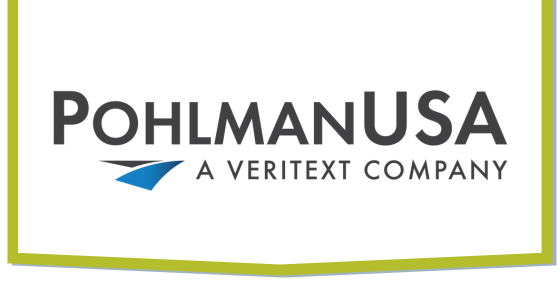Court reporters have a difficult job listening to and catching every spoken word verbatim during a deposition. As an attorney or other “outsider” it can be just as difficult to understand what the reporters themselves are talking about. During law school attorneys are taught legal terminology and acronyms. Likewise court reporters have a language of their own. If you have ever wondered what the court reporter is referring to or what all those letters behind their name mean your answers are finally here. Some of the most commonly referred to words and acronyms are defined for everyone to understand.
APPEARANCE FEE- The appearance fee is the fee charged by the court reporter either on an hourly or by day basis to attend the deposition. There can also be an appearance fee applied if the court reporter arrives for a deposition which is subsequently cancelled.
ASCII- referred to commonly as ASCII it is the American Standard Code for Information Exchange. It is based on the English alphabet and uses 128 specified characters including the letters A-Z, numbers 0-9 and basic punctuation to form a character-encoding system.
CCR – Certified Court Reporter (used in some states instead of CSR)
CLR- Certified LiveNote Reporter
CONDENSED TRANSNCRIPT- A condensed transcript is a version of the official transcript that is prepared with 4 pages on transcript on a single printed page.
COURT REPORTER- A court reporter may also be referred to as a stenographer. Their job is to transcribe speech during a deposition or other official court proceeding and provide it in written form.
CROSS NOTICE- A cross notice commonly has an addition or change to the original notice.
CRR – Certified Real Time Reporter
CSR- Certified Shorthand Reporter
DESKTOP VIDEO CONFERENCING- Desktop Video Conferencing (DVC) is a high-tech litigation support service. Combining the convenience of telephonic deposition attendance with the benefits of appearing in person. DesktopVC is a reliable, secure, and cost-effective way to attend a deposition from the continence of your home or office.
ELMO – An ELMO is a projector used during depositions. It has a light box so you can review x-rays, etc. It can also be an addition to a video conference allowing both sides to see exhibits.
E-TRANS (electronic transcript)- An e-trans is a way to receive the transcript electronically verse the traditional paper format. Depending on the format an e-trans may be searchable.
EXPEDITIED TRANSCRIPT- the request to receive a transcript completed before the standard deadline.
NOTICE- The notice of deposition is a formal discovery direction informing the opposing counsel or party of when and where to appear to answer questions under oath for an active litigation.
REALTIME (Communication Access real-Time Translation or CART)- Real-time is a type of transcript that is delivered via text on computer screens within seconds of the words being spoken.
ROUGH- A rough or also referred to as rough draft transcript is the first draft coming straight from the steno machine with little or no clean-up. There will be mis-strokes, and the draft will be in steno format. It cannot be used as official testimony.
RPR- Registered Professional Reporter
SCOPIST- A scopist is a person hired by the court reporter to edit the transcript.
STENO- Steno is the short hard version without full names, etc.
STENOGRAPHY- Stenography is the process of writing in shorthand.
STENO MACHINE (stenographic machine)- A steno machine or stenotype machine is a specialized typewriter used for typing shorthand.
STIP (stipulation)- A stip is used by counsel following filing or a lawsuit setting out agreed to terms by the parties.
TAKING ATTORNEY- A taking attorney is the attorney on record asking the witness questions and gathering testimony.
TENDER- Plaintiff counsel may tender their witness which is presenting the witness and making them available for questioning.
Text Streaming – Is real-time testimony being streamed over the internet to other parties participating in other states, offices, etc.
TRANSCRIPT- A transcript is the written document reflecting verbatim what was spoken on the record during a deposition or court proceeding.
